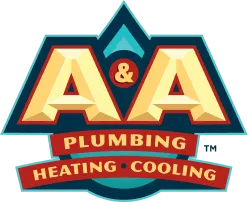For most homeowners, protecting their property and their loved ones is a top priority. People defend their homes in a number of ways, including installing smoke and CO2 detectors and home security systems.
What many people don’t know is that your plumbing pipes can also impact your home safety! Read on to learn all about the best materials to keep your home’s piping system, and yourself, safe!
PEX
PEX pipes, or cross-linked polyethylene pipes, are a common alternative to PVC and CPVC pipes. They are thermally resistant, which means they can be used for both hot and fresh water lines, and they are less likely to burst than pipes made from other materials.
Because polyethylene is a recyclable material, PEX pipes are considered a more eco-friendly material. It is also one of the most affordable piping materials on the market today.
Stainless Steel
Stainless steel pipes come in a variety of types and sizes that can be used for different purposes. They are corrosion and chemical resistant, which makes them very unlikely to burst.
This sets them apart as an excellent candidate for your home piping system. The drawback to stainless steel piping, however, is that it is substantially more expensive than other piping materials.
Brass
Much like copper, another highly popular piping material, brass pipes are commendable for their ability to carry drinking water safely. Because of its resistance to corrosion and damage from heat and water, brass pipes can be used for a number of applications.
If you choose to install brass pipes for your drinking water supply lines, make sure that your plumber offers lead-free brass, as any contact with lead can make drinking water deadly. Other applications for brass pipes include drain waste lines and, in some areas of the country, gas lines.
CPVC
Chlorinated polyvinyl chloride, or CPVC, pipes are another safe option for drinking water lines. This material is very similar to PVC, except that it has a higher chlorine content. CPVC is also a smart choice because it’s smooth outer surface reduces water noise better than other piping materials do.
This material is also known to have minimal problems with water hammer, not to mention that it is well insulated, so it reduces energy loss.
While it also costs more than PVC, CPVC is more durable and more versatile than metal piping, not to mention that it is hugely fire resistant so that it won’t be degraded by heat. This makes it an excellent candidate for hot water lines.
Cast Iron
Cast iron has been used in piping for several centuries. In fact, the first cast iron pipes were installed in 1623 to provide water to the garden fountains at France’s Château de Versailles. Since then, it has been used to transport everything from fresh water to gas and has even been used for gas lines.
Today, cast iron is noted for its long-term durability, as well as its incredible noise reduction, and is still a viable option for safe piping within your home.
If you’re ready to prioritize your family’s health and safety at home by replacing your pipes, then give A & A Plumbing a call today! Call (210) 566-2665 for service in the San Antonio area! Don’t forget to share the information you learned here with your friends and loved ones, to help them keep their family safe too!
